us toll free: 1-800-948-5563 international: +1 (843) 849-0283 UK: +44 (0) 1334 260018

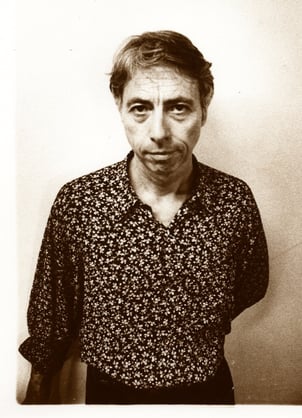
Emerging in the 1960s from the American minimalist movement led by John Cage and Morton Feldman, Harold Budd has become one of the country’s most prolific, consistent, and influential composers and musicians. Harold was born in 1936 Los Angeles and discovered music during his mid-teens when he heard a Stan Getz track on a car radio.
Inspired, he picked up the drums and played in local bands for the next few years, followed by a stretch in the Army band, an experience that included playing with free-jazz saxophonist Albert Ayler. In 1966, he earned a degree in music composition from the University of Southern California and taught at the California Institute of Arts between 1970 and 1976. By this time, Harold had turned against the sterility of minimalism and toward an aesthetic that celebrates beauty.
In a 1997 interview with Paul Tingen, he explained "I found delights and wonder in a musical language that was really uncool, that was really unhip and had nothing to do with avant-garde, and that was also different from the starkness of much minimalistic music. When I made my break from avant-garde in 1970, both psychologically and aesthetically, I pretty much rejected everything I had done until then, but didn't quite know which direction to go in. But once I hit on my interest in older music, I found a new direction, in which I purposely tried to create music that was so sweet and pretty and decorative that it would positively upset and revolt the avant-garde, whose ugly sounds had by now become a new orthodoxy. Hard as is it is to imagine now, the prettiness of my music was very much a political statement at the time."
Through his collaborations with Brian Eno starting in the late 1970s (their 1980 album Plateaux of Mirror is considered a cornerstone of “ambient” music, a term Budd detests almost as much as “new age"), Budd found an enthusiastic audience among the younger “alternative” music scene of the time. In addition to numerous solo recordings, he went on to collaborate with a who’s who of anti-pop musicians including David Sylvian, Cocteau Twins, Jah Wobble, Bill Nelson, Andy Partridge and Robin Guthrie, to name just a few.
This same appreciation for beauty informs his poetry, although often expressed with a sense of loss or melancholy. Throughout his career, poetry – or what Harold refers to as “something like poetry, but not the same thing” – has been an occasional companion to his music. In the 1990s he recorded an album with the French composer Hector Zazou that incorporated some of Budd’s poems (later included in his first collection, Colorful Fortune), and he also released Walk Into My Voice, in which he recites 33 American beat poems against his own musical backdrop. About his own poetry, Harold wrote in the foreword for Colorful Fortune “I grab these; I grab them before they disappear; and I grab them in bundles - they don’t occur in a steady lineage, developed over time: they’re here for a while, then they’re not here forever. I keep them as they happen in a single notebook: a Chinese blank-page journal at the moment, but still I misplace or lose some.”
Through a common friend (the bass player Keith Lowe), in 2009 Heavenly Monkey (HM) publisher Rollin Milroy was offered the opportunity to participate in publishing Budd’s first collection of poetry, Colorful Fortune. That project then led to several chapbooks, a couple of broadsides, a collection of original etchings (like John Cage, Harold’s composing extends to the visual arts and printmaking, something incorporated in most of his HM publications), a second major collection (Angel, 2013), the selected compilation Sunblind Highway, and the upcoming opus Aurora Teardrops (Spring 2016). All of these projects are designed, printed by hand, and presented in formats and bindings that reflect the author’s spare style, with an emphasis on the quality of materials and execution.
Throughout 2016, Budd will be making occasional appearances performing Aurora Teardrops, in which he and Bradford Ellis improvise a largely electronic score while painter Jane Maru reads the 59 poems that make up Aurora Teardrops. The HM publication of these poems will incorporate prints of Maru’s original batik paintings (featured on the covers of the recent albums Jane 1-11 and Jane 12-21, featuring improvised scores by Harold for Jane’s short, abstract films). A deluxe edition of just 26 copies will also feature an original watercolor frontis by her. An article from The Guardian about the Aurora Teardrops performance can be found here.
More details about Harold’s career and influence can be found in this 2005 profile and in this 1997 interview. A website dedicated to his work in being developed here; meanwhile his Facebook page maintains regular updates on his performances and other activities.
Colorful Fortune |
Carnival |
Sunblind Highway |
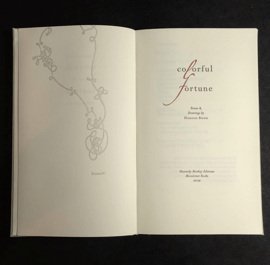 |
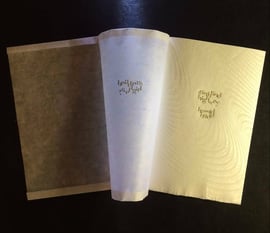 |
|
|
Harold’s first published collection of poems, issued in paperback, and a deluxe signed edition printed and bound by hand.The book was designed and set by Rollin Milroy at Heavenly Monkey, and printed letterpress by David Clifford at Black Stone Press. The first half of Colorful Fortune presents the debut of an extended cycle in 18-parts titled ‘Poem Sketches 2007–2008.’ The second half presents 11 poems that first appeared on three of his albums from the 1990s: By Dawn’s Early Light, She is a Phantom and Glyph. The book also includes 14 original drawings by Harold. These ‘arabesque’ drawings are variations on a theme that could be described as a visual expression of his music: a string, or line, or thread - meticulous in detail - that travels, meandering across a page, entering at one point and departing at another. |
Harold Budd’s debut work in fine printmaking, a series of five etchings that continue his exploration of the potential for improvisation in his distinctive “arabesque” drawings. Each of the etchings is named for a Renaissance composer, and printed in an edition of 15. Over the past four decades Harold has established an international reputation as one of America’s most influential composers and musicians. The addition of copper-plate engraving to his artistic pursuits was borne as a result of his first poetry collection, Colorful Fortune. Seeing the pencil drawings reproduced as relief prints in that book, Vancouver-based master printer Peter Braune thought the arabesques’ detail and fine lines made them perfectly suited for intaglio printing. Harold, who is open to all new creative opportunities, was game to play. |
An introduction to Harold’s poetry, this sampler presents nine poems issued in conjunction with a live performance of Aurora Teardrops. The total edition of 100 numbered copies was printed letterpress and bound at HM entirely by hand, in exactly the same manner as his more expensive titles. The poems were set at HM in Bodoni types, the paper was dampened for printing, and each sheet went through the press a total of four times (two colors each side). The first 20 copies form a deluxe issue: these were printed on Arches mouldmade paper, sewn into a handmade paste paper wrap. The remaining copies (numbered 21-100 but not signed) were printed on Somerset Book machine-made paper, and sewn into a jacket of vintage Guarro mouldmade paper (produced in Spain in the 1960s). |
"4" |
Aurora Teardrops |
Angel |
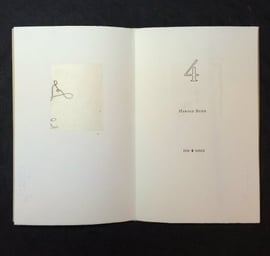 |
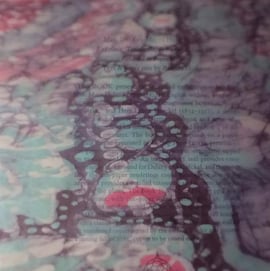 |
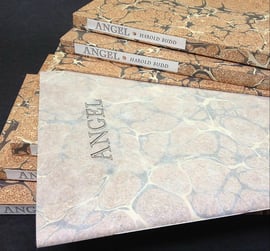 |
|
The first in HM's occasional series of Artists’ Pamphlets, “4” presents four new poems by Harold. To accompany the poems Harold created four new etchings, which in style and theme continue his exploration of the enigmatic "arabesques" designs that previously appeared in Colorful Fortune and Carnival. Each etching in this latest suite of four is named for a film director: Akerman, Cocteau, Jarman and Anger. The poems were by hand in Bembo, one poem per page, and printed damp on Arches Wove at HM with the Washington press. Copies 1 - 10 were reserved for Patrons, and contain all four of the etchings (a frontis; one facing the first poem; one facing the last; and the fourth facing the colophon). In these copies only, the frontis etching is initialed by Harold. Copies 11 - 50 were shared between the author and publisher, and contain just one of etchings (though which etching varies from copy to copy; we printed 10 of each, and distributed them randomly among the 40 copies). The pages are sewn into a heavy handmade paper wrap printed on both front and back. The Patron copies are issued with an additional transparent tissue jacket. |
Harold began writing the 59 poems that form Aurora Teardrops during his first collaboration with artist Jane Maru: a collection of her short films and his accompanying scores, entitled Jane 1-11. It was, however, her batik paintings on silk that he first encountered, and it is these batiks that form the vibrant visual core for Aurora Teardrops. Like all Heavenly Monkey books, Aurora Teardrops is printed letterpress. The poems and introductory texts have been set in Cancelleresca Bastarda, a widely-admired face designed by Jan van Krimpen in the 1930s. It has not, however, been cast in many decades. Interleaved throughout the book are six of Jane Maru’s batik paintings, reproduced in full color on traditional drafting vellum, a semi-transparent sheet that creates a visual effect similar to the original works on silk. Being semi-transparent, these prints both interrupt and overlay Harold’s poems, creating an interaction between the two artists similar to their live musical performances of the Aurora Teardrops poems. Each of the Deluxe copies also includes, as a frontis, an original watercolor painting by Jane. |
Written between December, 2010 and July, 2012, the poems in this new collection culminate with "Ellen's Death" on the passing of the mother of the author's son. The collection includes both short, abstract poems of the type presented in "4" and longer allusive poems similar to "A Thousand Years from Now," one of the most frequently recommended poems from Harold's first collection, Colorful Fortune. Like the poems, Angel's format and production are unadorned and straightforward. The poems are hand-set in 18-point Perpetua italic, with 30-point Monument for tilting. The paper is Barcham Green Bodleian, a white, laid 80-gram sheet of which we had just enough to produce an edition of 26 copies. It was lightly dampened and printed with HM's Washington handpress. The lightness of the Bodleian paper made a single signature of 28 pages possible. It is sewn into a stiff printed wrap with a two-layered dust jacket: a sheet of hand-marbled paper is wrapped in semi-transparent Japanese tissue, upon on which the title has been printed. The book is presented in a slipcase covered in the same vintage marbled paper, with a spine label. |